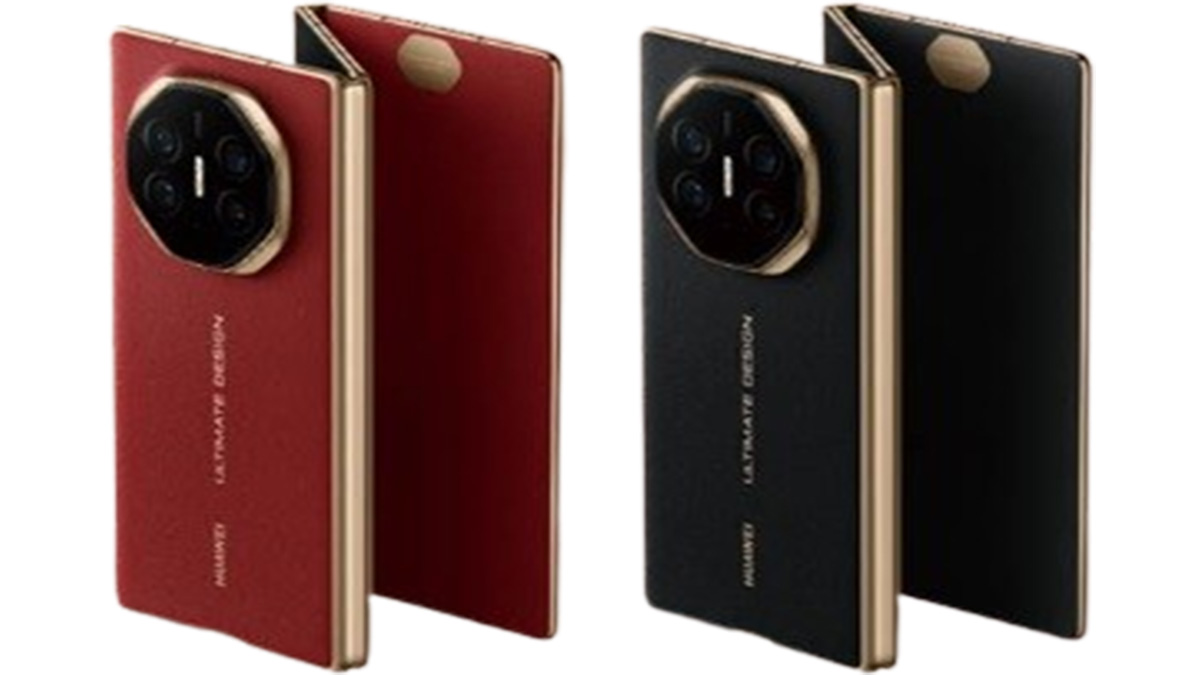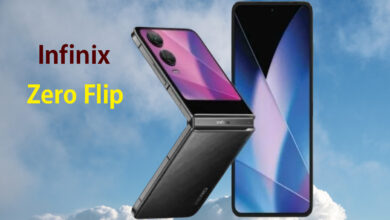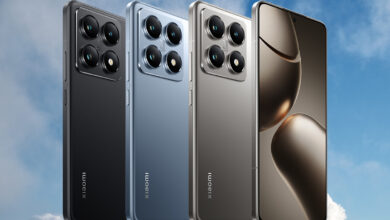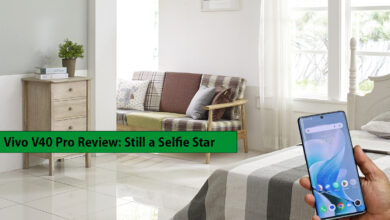China’s Huawei Unveils Its Answer to Apple’s iPhone 16 But It Comes with a Hefty Price Tag

In a bold move that has captured global attention, Huawei has launched the world’s first tri-fold smartphone. This announcement comes just hours after Apple unveiled its highly anticipated iPhone 16. The timing of this release is no coincidence; it reflects Huawei’s strategic positioning in an increasingly competitive tech landscape.
- A Game-Changer in Design
Huawei’s new device boasts a unique tri-fold design, setting it apart from traditional smartphones. This innovative approach not only enhances functionality but also offers users a larger display without compromising portability. Imagine unfolding your phone into a mini tablet for streaming or multitasking!
- The Price Point
However, innovation comes at a cost. The price tag on this cutting-edge device is hefty, raising eyebrows among potential buyers. While many are excited about the features and capabilities, others may hesitate due to the financial commitment required.
- A Resilient Comeback
Despite facing significant challenges, including U.S. sanctions, Huawei is making waves in the tech industry once again. Their recent models, like the Mate 60 Pro and Mate X5, have gained immense popularity and contributed to impressive revenue growth. In August alone, Huawei reported double-digit increases in both revenue and profit.
- The Tech Rivalry Intensifies
This launch highlights the ongoing rivalry between Washington and Beijing in the tech sector. As companies like Huawei push boundaries with innovative designs and features, they also face scrutiny from governments concerned about security and competition.
- What’s Next?
As consumers weigh their options between Huawei’s tri-fold smartphone and Apple’s iPhone 16, one thing is clear: competition drives innovation. Both companies are pushing each other to deliver better technology at faster rates.
Huawei Mate XT: A New Era in Smartphone Innovation
The Huawei Mate XT has taken the tech world by storm, racking up over 3.7 million pre-orders since its online launch on Saturday. This impressive figure is a clear sign of Huawei’s resurgence in the competitive smartphone market.
Pricing and Availability
Starting at 19,999 yuan (approximately $2,800), the Mate XT positions itself as a premium device. While the price may seem steep, early demand suggests that consumers are eager to invest in cutting-edge technology.
Revolutionary Design
Richard Yu, chairman of Huawei’s consumer business, highlighted the smartphone’s groundbreaking features during the livestreamed launch event. The Mate XT represents five years of dedicated research and development.
- Triple-Fold Technology: This is not just another foldable phone; it’s the world’s first triple-fold smartphone.
- Slim Profile: It is also touted as the largest and thinnest foldable handset globally.
- Innovative Folding Mechanism: The Mate XT achieves outward folding for the first time in smartphones, eliminating gaps with its inward-folding design.
Why It Matters
The success of the Mate XT could signal a turning point for Huawei. With innovative technology and high consumer interest, this smartphone might set new standards for what users expect from their devices.
As we move further into an era defined by versatility and functionality, products like the Mate XT will likely lead the charge. Its unique features not only enhance user experience but also challenge competitors to innovate.
In conclusion, with millions already committed to purchase, the Huawei Mate XT isn’t just another smartphone; it’s a symbol of technological advancement and market resilience. Keep an eye on this device—it may very well shape the future of mobile technology.
Huawei’s Game-Changer: The Mate XT
Huawei has just unveiled an impressive new smartphone that’s turning heads in the tech world. The Mate XT features a unique design with three foldable panels, allowing for a versatile 10.2-inch screen. Available in striking red and sleek black, this phone is not just about looks; it’s about innovation.
A Competitive Landscape
The launch comes at a pivotal moment. Just hours earlier, Apple introduced the iPhone 16, its first smartphone designed specifically for generative artificial intelligence (AI). This move aims to entice users to upgrade by offering advanced features that leverage AI capabilities.
Amber Liu from Canalys highlights the significance of this timing. She notes that Huawei’s resurgence poses a direct challenge to Apple in China—Apple’s second-largest market, accounting for over 20% of its global shipments. In fact, Chinese smartphone manufacturers have recently dominated the top five spots in domestic sales for the first time ever, pushing Apple down to sixth place.
New Era of Competition
Liu emphasizes that the simultaneous launches signal a fresh wave of competition in China’s premium smartphone market. Key battlegrounds will include high-end products, software capabilities, and AI integration.
While Apple promotes its iPhone 16’s ability to generate text and images through natural-language prompts—similar to ChatGPT—the specifics of any AI features on Huawei’s Mate XT remain unclear.
What This Means for Consumers
For consumers, this rivalry means more choices and better technology. With both companies vying for dominance, we can expect rapid advancements in smartphone capabilities. Whether you’re drawn to Apple’s generative AI or intrigued by Huawei’s innovative folding design, there’s something exciting on the horizon.
In conclusion, as Huawei steps up its game against tech giant Apple, consumers stand to benefit from enhanced features and competitive pricing. The Mate XT is just one example of how innovation continues to shape our mobile experiences. Keep an eye on these developments; they could redefine what we expect from our smartphones!
The Future of Foldable Smartphones: Insights from Counterpoint Research
The world of smartphones is evolving rapidly, and foldable devices are at the forefront of this transformation. Jene Park, a senior analyst at Counterpoint Research, highlights key trends shaping the future of these innovative gadgets.
Bigger Displays on the Horizon
Park emphasizes that manufacturers are shifting their focus towards larger displays. Current book-type foldables typically range from 7 to 8 inches. However, there’s a push for even bigger screens. This change could redefine user experience, making multitasking and media consumption more enjoyable.
Battery Life Matters
Extended battery usage is another critical factor in the development of foldable smartphones. As display sizes increase, so does the need for efficient power management. Users want devices that can keep up with their busy lives without constantly needing a charge.
Pricing and Availability: The Key to Success
While innovation is exciting, analysts warn that success hinges on pricing and availability. Liu notes that actual sales may fall short of pre-orders if consumers find prices too steep or if stock is limited. Companies must strike a balance between cutting-edge features and affordability.
Huawei’s Comeback Story
In this competitive landscape, Huawei is making waves. According to Yu, the company saw a remarkable 72% increase in flagship smartphone sales in early 2024 compared to last year. This surge highlights Huawei’s determination to reclaim its position in the market despite facing significant US restrictions.
Huawei’s Resurgence: From Controversy to Competition
For years, Huawei has been at the center of a storm. U.S. policymakers have labeled the company a national security threat, claiming that its technology could be used for espionage by the Chinese government. Despite these allegations, Huawei has consistently denied any wrongdoing.
The fallout from these claims was significant. The U.S. imposed a ban that prevented companies like Google from providing Huawei with its Android operating system. This left many new Huawei devices without essential software support, leading analysts to predict that their smartphones would soon become “bricks.”
However, the narrative is shifting.
A Comeback Story
Huawei is not backing down. The company is strategically repositioning itself in the tech landscape. Last year, it launched an electric sedan aimed squarely at Tesla’s Model S—a bold move into the automotive sector that showcases its ambition and innovation.
But that’s not all.
Venturing into AI
Huawei is also making strides in artificial intelligence (AI). Earlier this year, Nvidia named Huawei as a top competitor in various AI-related fields, particularly in processor production. This recognition highlights Huawei’s commitment to advancing its technology and competing on a global scale.
Looking Ahead
As Huawei navigates through geopolitical tensions and technological challenges, it remains focused on growth and diversification. With ventures into electric vehicles and AI, the company is proving resilient against external pressures.
In conclusion, while challenges remain, Huawei’s determination to innovate could redefine its future—and perhaps reshape perceptions along the way. The tech world will be watching closely as this story unfolds.
Washington’s Stance on Huawei: A Complex Landscape
In recent years, Washington has labeled Huawei a national security risk. This claim, which the company vehemently denies, has led to a series of sanctions aimed at curbing its influence. The U.S. government’s strategy has expanded beyond Huawei, now encompassing broad export bans on advanced American chips to all Chinese firms. The goal? To slow down technological advancements that could benefit China’s military.
The Apple Factor
Interestingly, while Huawei faces these challenges, Apple seems to be treading carefully in the Chinese market. As of now, the tech giant has not announced an AI partner for its upcoming iPhone 16 range in China. Furthermore, Apple’s AI software will only be available in Chinese next year. This delay raises questions about Apple’s commitment and strategy in one of its largest markets.
Economic Realities
Amidst this geopolitical tension, consumer sentiment plays a crucial role. Huawei recently launched the Mate XT with a starting price of 19,999 yuan. However, this price point has sparked criticism for being out of reach for many ordinary consumers. With China experiencing sluggish economic growth and rising financial insecurity among citizens, such pricing appears insensitive.
National Pride vs. Practicality
Nationalistic pride can only go so far when it comes to purchasing power. While many may rally behind domestic brands like Huawei during times of tension with the West, affordability remains a pressing concern for everyday consumers.
As the landscape evolves—shaped by both geopolitical maneuvers and economic realities—companies must navigate these complexities carefully to remain relevant and accessible to their audiences.
In summary, Washington’s stance on Huawei is just one piece of a larger puzzle involving technology giants like Apple and the realities faced by consumers in China today.






